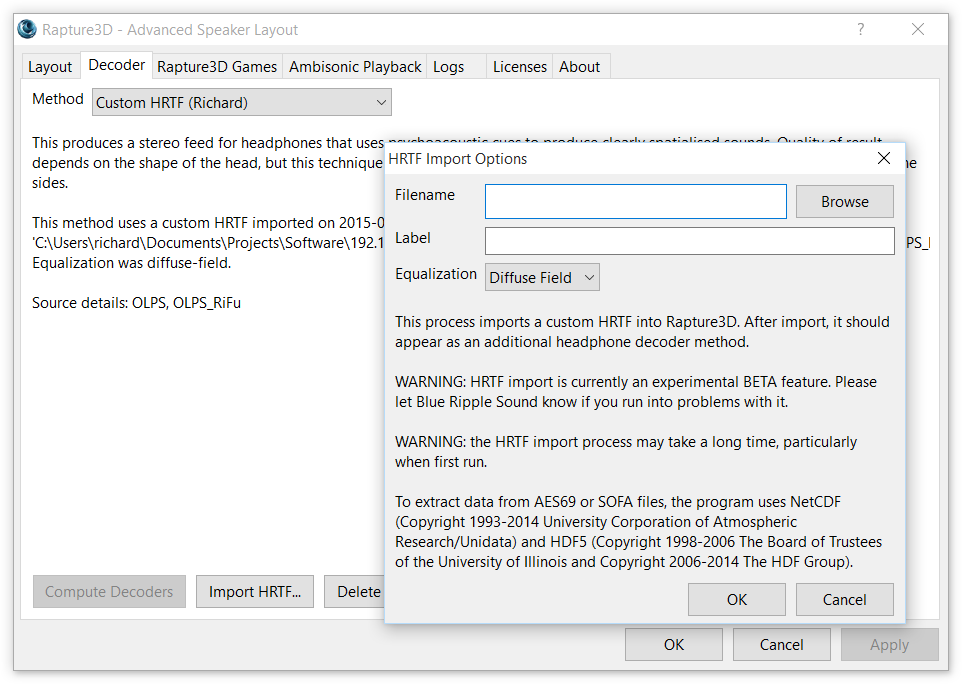Personalised HRTFs in Rapture3D Advanced
Rapture3D Advanced v2.7.0 introduced support for the import of personalised HRTFs from AES69 files (if you are lucky enough to have such things).
Personalised HRTFs are effectively acoustic models of an individual's head. Using these, it is possible to create synthetic binaural stereo which is tailored for a particular individual.
The reason we care about this is that HRTFs are a great way to do 3D audio on headphones. However, HRTFs vary from person to person, because their head and ear shapes are different. We provide "generic" HRTFs models (for instance, our Amber HRTF) which work well for many people, but even better results can be achieved using personalised HRTF measurements.
Rapture3D Advanced Features
We really mean it when we say this is an experimental feature of Rapture3D Advanced. AES69 files are still somewhat rare, the format has some rather complex features, and measured HRTFs have "quirks" depending on how they have been measured. Please let us know if you run into trouble, and please be aware that the behaviour of this feature of the software may change significantly in later versions.
That said, here's a picture of the new import screen in Rapture3D Advanced Speaker Layout:

Once imported, a "Custom HRTF" is added to the available headphone decoders in Rapture3D, for use:
- ... with the Rapture3D OpenAL driver, to provide sound in OpenAL games.
- ... with the Rapture3D Ambisonic Player, to play back 3D Ambisonic sound files.
- ... with the Rapture3D Advanced Decoding Plugins, for decoding within studio software.
Please note that HRTF import is not available in the Rapture3D "Game" or "User" editions.
Where do I get my HRTF Measured?
Please be aware that it's quite difficult to get hold of a personalised HRTF measurement. The AES69 file format was introduced as a standard for HRTF storage in early 2015, and most data in this format has come from HRTF research at universities or research facilities. At the time of writing [2015-08-03], we aren't aware of anyone offering HRTF measurement as a commercial service.
Accurate HRTF measurement is definitely not for the faint of heart. Right now, it typically involves large numbers of speakers, an anechoic space, microphones, laser alignment, complex software, motors, and staying completely still for rather a long time while spaceship noises are blasted at you. This is expensive and complex (but fun if you are us!).
But there's hope. Measurement this way is not the only way to get hold of HRTF data. There is ongoing research into HRTF estimation, for instance using 3D scanners or photographs. We hope that adding support for AES69 files to Rapture3D will help get this sort of technology out into general use.
